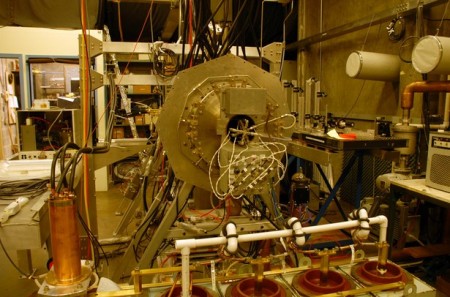The University of Washington (UW) researchers, who have been working on fusion energy for over a decade, have developed a bright high-energy light that can be utilized to make smaller microchips.
 The lab equipment includes a small system that measures plasma for electronics applications, attached to a larger tank containing plasma for energy research. (credit: University of Washington)
The lab equipment includes a small system that measures plasma for electronics applications, attached to a larger tank containing plasma for energy research. (credit: University of Washington)
The microchip industry currently uses the 193-nm ultraviolet light, which cannot be used to etch much smaller circuits. The industry identified that the 13.5-nm light is the future standard to make microchips. High-temperature, electrically charged gases called plasmas are the solutions to create such extreme ultraviolet light. The industry is working on different solutions to generate this extreme ultraviolet light. However, existing extreme ultraviolet light sources were not able to generate sufficient power, a key issue over the last decade.
The bright high-energy light developed by the UW team is a solution to this long-standing issue. The team developed an inexpensive fusion reactor model, which utilizes currents traversing the material instead of large magnets to control the million-degree plasma that generates the high-energy light. The novel technique is able to produce stable and long-lived plasma.
The research team first conducted the experiment in 1999 and discovered a bright high-energy light. The team then turned its focus on applications for this light and identified use in the microchip industry. Existing technologies used to etch microchip can produce a spark with a life time of 20-50 ns. The UW beam has a life time of 20-50 millionths of a second, which is a 1,000-fold longer time. This means more light output and more power get deposited over the wafer, said Uri Shumlak, one of the researchers. Moreover, the innovative technique enables better control over the generation of million-degree plasma.
With an initial grant from the Center for Commercialization of the university, the research team demonstrated its capability of generating 13.5-nm light. Using the Washington Research Foundation grant, the researchers reduced the equipment to the size of a pin that is capable of generating a sharp beam. The researchers have established a startup named Zplasma in order to commercialize their technology for next generation microchip production.